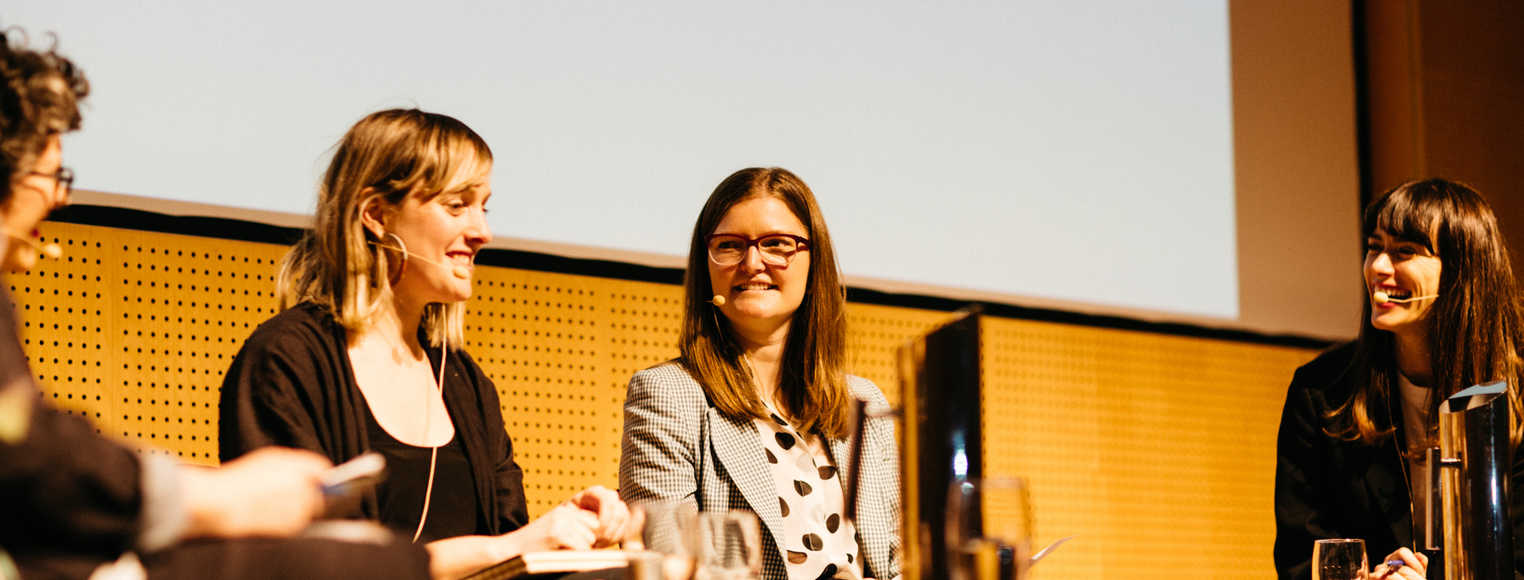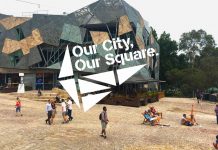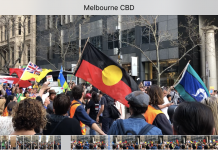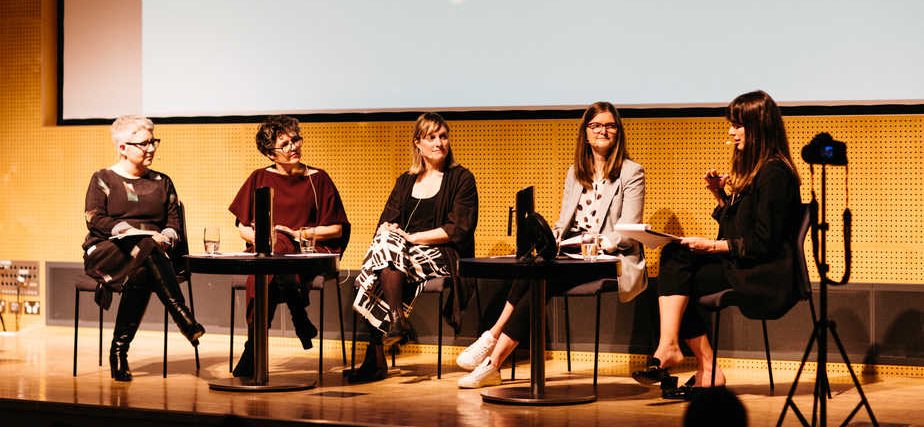 As the pressures in our cities intensify, such as unaffordable housing and congested roads, four expert practitioners in urban design and planning spoke with Genevieve Brannigan, the founder of the Communications Collective, about how we can make our cities more ethical.
As the pressures in our cities intensify, such as unaffordable housing and congested roads, four expert practitioners in urban design and planning spoke with Genevieve Brannigan, the founder of the Communications Collective, about how we can make our cities more ethical.
What is an ethical city, and why does ethics matter to city planning? The experts with the answers are Brighid Sammon, a senior urban planner at Hansen Partnership; Katherine Sundermann an associate director at MGS Architects; Meaghan Dwyer, a principal at John Wardle Architects; and Claire Grealy, director of the economic and social advisory at Urbis.
An ethical city is one in which everyone has equal access to a job, housing, education and transport, according to Meaghan Dwyer, a principal at John Wardle Architects.
But we cannot make our cities more ethical unless the vision for a city’s future is shared by everyone involved, says Dwyer. “Ethical cities balance interests. It is about developing a vision, which is shared, and therefore able to be sustained. The ethics become about the principles we sign up to as influencers or investors or decision makers or residents or citizens to achieve that vision.”
“Ethical cities balance interests”
A plan, in other words. But our planning system is fraught with inequity. The planning rules are unclear and inconsistent which leads to blow-outs in land values, says Brighid Sammon, a senior urban planner at Hansen Partnership. And the planning approval system encourages opposition. “I got a planning notice in my letterbox this week, and it says, ‘Would you like to object to this application?’,” Sammon says. “The way we speak about development influences the way we think about it. It sets up this dynamic where you’re ultimately thinking about something in a negative way from the get-go.”
What needs to change?
We cannot abandon our cities: they are the engine room of our economies, creating wealth and jobs. More than half (54%) of the world’ populations live in cities, and over 70% of the world’s wealth (GDP) is generated within our cities. And they are growing. By 2050, our urban population globally will have risen to 66%, the United Nations predicts.
Instead, our cities must focus more on values and less on expedience, says Katherine Sundermann, associate director at MSG Architects. “An an ethical city is a just, a good city, in contrast to the expected and the expedient. You have to consider future populations. We hear a lot about existing communities, but we don’t have a lot of conversations about our future communities and what they might require.”
Three key themes emerged from the views of the panel, and from questions raised by participants.
Certainty and participation in planning and development
Katherine: How do we rethink city shaping to gradually involve the community? There were some great examples yesterday [at the Living Cities Forum], especially from Assemble Studio [UK]. They talked about a community land trust, an area of run-down housing. Residents formed a trust and were able to purchase that land from the government for a couple of pounds. They have collective ownership over these houses and Assemble worked on upgrading the houses, but also creating a sense of community as well.
 An ethical city is one where communities can participate in city-making. Assemble worked with them to create a workshop where they built parts of their houses. They turned that into a business that supported the neighbourhood and the community land trust. They sell these beautiful ceramic plates that you can buy online. It’s finding ways that make the community self-supporting and allows it to engage with its environment.
An ethical city is one where communities can participate in city-making. Assemble worked with them to create a workshop where they built parts of their houses. They turned that into a business that supported the neighbourhood and the community land trust. They sell these beautiful ceramic plates that you can buy online. It’s finding ways that make the community self-supporting and allows it to engage with its environment.
make the community self-supporting
Brighid: A model in the United Kingdom that’s growing in interest is called the Neighbourhood Plan. Parts of the city are demarcated, and the residents work together with city planners to come up with a plan for their neighbourhood. They might talk about how much density they’re comfortable with, what sort of materiality it should be. [This is] long before any developer has purchased the site and gone ahead with the design.
Developers need planning because what’s happening now is we’ve got no certainty, and it’s over inflating the value of land. You go to your public planner to get something done; they’re saying, “Well, actually no, we thought the height on this land would be six stories. But to get a profit on what they’ve paid for that land, they need 17 stories. There’s a total miscommunication between the two parties.
Suddenly, everyone was saying, “Oh, bring it to my neighbourhood.
Katherine: There’s also a great example from Canada. It was the North Vancouver Official Community Plan of ’92 [since updates in 2002 and 2014]. They were facing a big population growth. They needed more housing, they needed denser housing, and it was something the community felt resistance to. Rather than making it a negative thing about growth, they flipped it and said, “Actually if you accommodate more people in your neighbourhood, then we’re going to provide you with all of this extra support regarding public transport and public realm upgrades.” Suddenly, everyone was saying, “Oh, bring it to my neighbourhood. We want to have more density. We want to have the upgraded public spaces.” Elevating the conversation and allowing citizens to be part of that conversation is the answer.
Professionals need to “push back” on the brief
Katherine: As a practitioner, one thing that we can is push back on the brief. A developer that might have certain expectations but, around the world, you see more of an appetite for pushing back. Rob McGauran, the director at MGS, is the biggest advocate of social housing I know. Whenever he gets a new housing project, the first thing he says to the client is, “Ah, I think we could have 15% affordable housing in here!” And what’s surprising is they rarely say no.
Not enough people are asking the same question. It’s on [us] professionals to start pushing back. And there’s a new generation of architects and practitioners that are taking the next step and writing the briefs themselves.
Meaghan: And building them for themselves. As an architect, we must assume that we can influence. We must talk to our clients about many aspects, whether it’s sustainability or what have you. It’s essential that we take the opportunity to explain issues that may not be well understood and suggesting a good way forward. Very important.
I know that Brighid’s involved in is Nightingale Housing, which is an alternative model of delivering housing. It is about the triple bottom line. It’s trying to make more sustainable housing, more affordable, and also a type of housing that creates a sense of community.
Nightingale Housing is an alternative model of delivering housing.
Claire: One of the most useful things we can do is look at how people use space and be willing to watch and learn and listen and engage. We have to design systems to accommodate how people behave, not how city planners would like people to behave.
The city is an extension of its citizenry [but] a city’s citizenry is not fixed. People come in; they leave, some live publicly, some live in the shiny towers. Who are we defining as excluded and included? There’s a strong draw to being surrounded by what I call PLU – people like us.
Get the banks to rethink profit
Audience member: I’m one of those dirty developers! We struggle with a funding requirement imposed by banks – the cheapest form of capital – for profit. We’re conflicted in a lot of ways by asking, “What do we need for a return,” – which isn’t 20 per cent – versus what the marketplace [bank] asks for. Even Nightingale is still a profit-on-cost model which means the investor still demands a return on investment.
There’s this dirty word, profit, which we get tarnished with.
There’s this dirty word, profit, which we get tarnished with
We did a development where we asked for additional levels [building height increase]. We said to the council that, if you allow us to have these levels, those additional profits, we’ll give them back to our residents. We’re prepared to sign whatever commitment you’d like us to. We calculated about $30,000 per apartment if they would approve it. That sent the council into spins and uncertainty, and it didn’t go through.
Katherine: Speculative development is the type we’re all familiar with: a developer speculates on what the future residents might want. They are very risk averse because they’re relying on funding from the bank. The bank’s path of least resistance is to keep producing what’s worked in the past.
Deliberative development, on the other hand, has the future residents involved in the design and conception and sometimes funding of the project. So, Nightingale is an example of that. If you’re involved in the design of your future house, you choose more sustainable options because you know that you’re the one that’s going to be paying the energy bills. You might decide to have more shared spaces because you want to have a vegetable garden on your rooftop. And the third benefit is that you can save money because no-one needs to make a profit from it.
Meghan: Nightingale Housing is about turning housing from an investment vehicle into a place to live. They only cater to the owner-occupiers. They’ve got social-impact investors who have capped profits. They’ve been able to innovate and create more generosity than what you see in standard housing in Melbourne. The critique of Nightingale Housing is that people call it affordable housing for the middle class. That’s what it is! I think it’s great! But it is imperative that all the elements of society are helped. I know that with Nightingale Housing are aiming towards 20% affordable housing.
This is pushing back against some of those global forces. One thing that shapes Melbourne is the shifting of global capital. A lot of those shiny towers we see outside are just places to store money. Both foreign and national investors store cash in apartments. And it’s more economically viable is no-one is living in that apartment. I think we need to question that model.
Ethical Cities was part of a series called Collectivity Talks run by the Communications Collective
Follow me






























